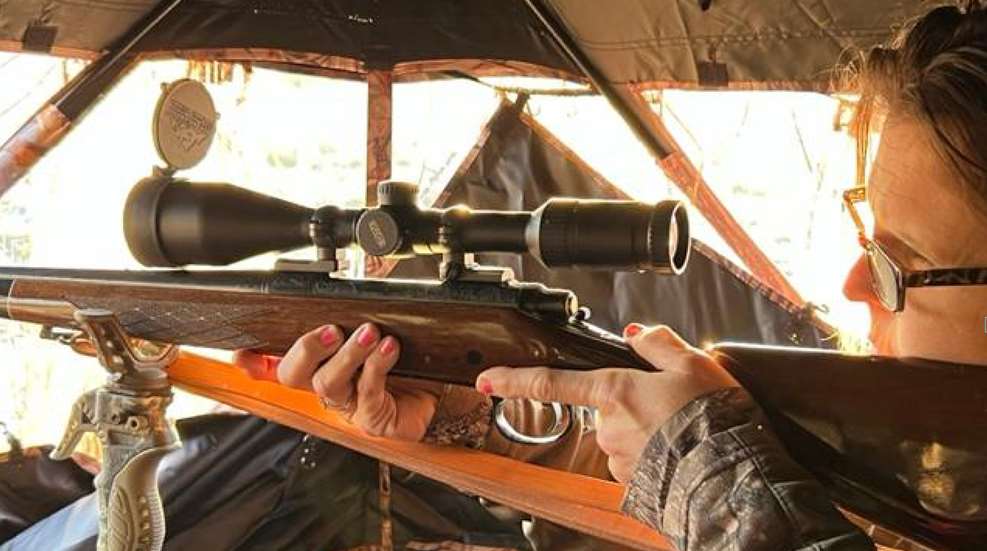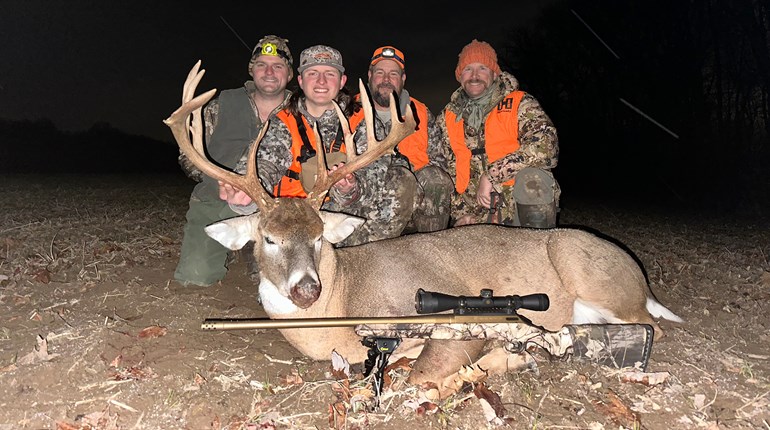
Late-season deer hunting can be very difficult and oftentimes frustrating. This is especially true in the southern states where deer season is still in progress. Late-season deer hunting is challenging because these deer have been hunted all season long, migrating patterns have been disturbed, and the woods and fields are full of human scents. Deer often turn nocturnal when the pressure gets too intense.
There are things that you can do to help you fill your tag during this time of year. You must take advantage when deer, especially trophy bucks, drop their guard and make a mistake. That does not mean that they are just going to throw caution to the wind and prance around in a meadow, presenting the best broadside shot for you. This means that the odds are still in the deer’s favor, but you can take advantage of any mistakes made by late season wary deer.

Brush-In
Many times, late-season deer avoid hunting blinds that they ignored at the beginning of the season. You will know when the deer no longer trust a blind when large deer are not seen and the does stomp and bark at the structure. The trick is to hide a pop-up blind in a new area. The key word is hide. The blind must be brushed in, covered and concealed within the surrounding brush.
You can also build a ground blind. This is where you find a natural structure such as a fallen tree, depression in the ground, or other obstacle, then you brush in around it. Do not remove too much ground cover and brush from the area you are hunting because you still want it to look natural. Do remove natural material to give you a clear shot.
Search for areas with a lot of deer signs. Tracks, scrapes and rubs are good indications that deer are using the area. Also, be on the lookout for bedding and feeding areas to set up on, and game trails wildlife use to move about the area. The idea is to insert yourself and intersect the areas where deer are frequenting.
By moving to a new area, there is a greater chance of taking advantage of a mistake made by the deer. When the deer changes its routine to counter the increased hunting pressure, it is more likely to make a wrong move or not notice the awaiting hunter.

Camouflage Mesh
The use of camouflage mesh can help mask you in your blind. This can trick a cautious deer into the open and away from the security of brush. Camouflage mesh allows the hunter to see through to the outside, while preventing the deer from seeing in. It gives the illusion that the blind is closed without a hunter inside.
Hunting blinds either have cut-outs for the windows or hinged covers that are opened to shoot through. The camouflaged mesh makes it look as if the window covers are closed. Blinds that only have cut-outs for shooting through are the easiest for deceiving the hunter inside. The deer can see the silhouette of the hunter. The camouflage mesh solves this problem.
Camouflage mesh can be put up in the blind by using thumb tacks or secured with strips of hook-and-loop fastener. Place the mesh inside the blind to break up any silhouette of the hunter inside. Every hunter should have a piece of camouflage mesh in his or her hunting pack, regardless of if it is early or late season.

Shooting Sticks
Shooting sticks are essential for taking late-season deer. Deer during the late season are usually jumpy and do not stay around for long. Shooting sticks help stabilize the rifle and allows for quicker target acquisition. Faster sight picture and sight alignment means a faster and more accurate shot.
Hunters accustomed to shooting out of a blind usually rest their rifle on the windowsill or cut-out of the blind. Late-season deer will normally see the rifle barrel ease out of the window and are gone within an instant. A shooting stick allows a hunter to move further to the back of the blind, keeping both the hunter and rifle barrel inside the blind.
Shooting sticks are very helpful in taking longer shots. This is important because late-season deer usually keep further away from feeders, blinds and other structures. To a deer, distance means safety. Shooting sticks help the hunter take advantage of the deer making the mistake of showing itself from a distance.

Comfortable Chair
Late-season deer hunting usually means long hunting hours. The longer a hunter sits in a blind, the more likely he or she will get a shot at a deer. During the latter part of the season, deer change their movement patterns. You are more likely to see a deer during the midday hours in late season than in early season.
It is crucial that you have a comfortable chair. This sounds simplistic, but many hunters do not think about it until they are about two hours into their hunt, shifting around in an uncomfortable chair. A comfortable chair keeps you in it. If you are not comfortable during the long hours it takes to connect with a late-season deer, you will make unnecessary movements and noise.
If you have been hunting for any length of time, you have probably sat on an old rusty folding chair. I have been in very expensive hunting blinds that had the worst chairs to sit in. There is no reason not to have a comfortable chair. There are several manufacturers of collapsible and portable blind chairs that are extremely comfortable.
Take the extra time to think outside the box to have a successful late season hunt. If you are well-placed, camouflaged, and comfortable, sitting in a deer blind for 12 to 14 hours will pay off in the end!














































